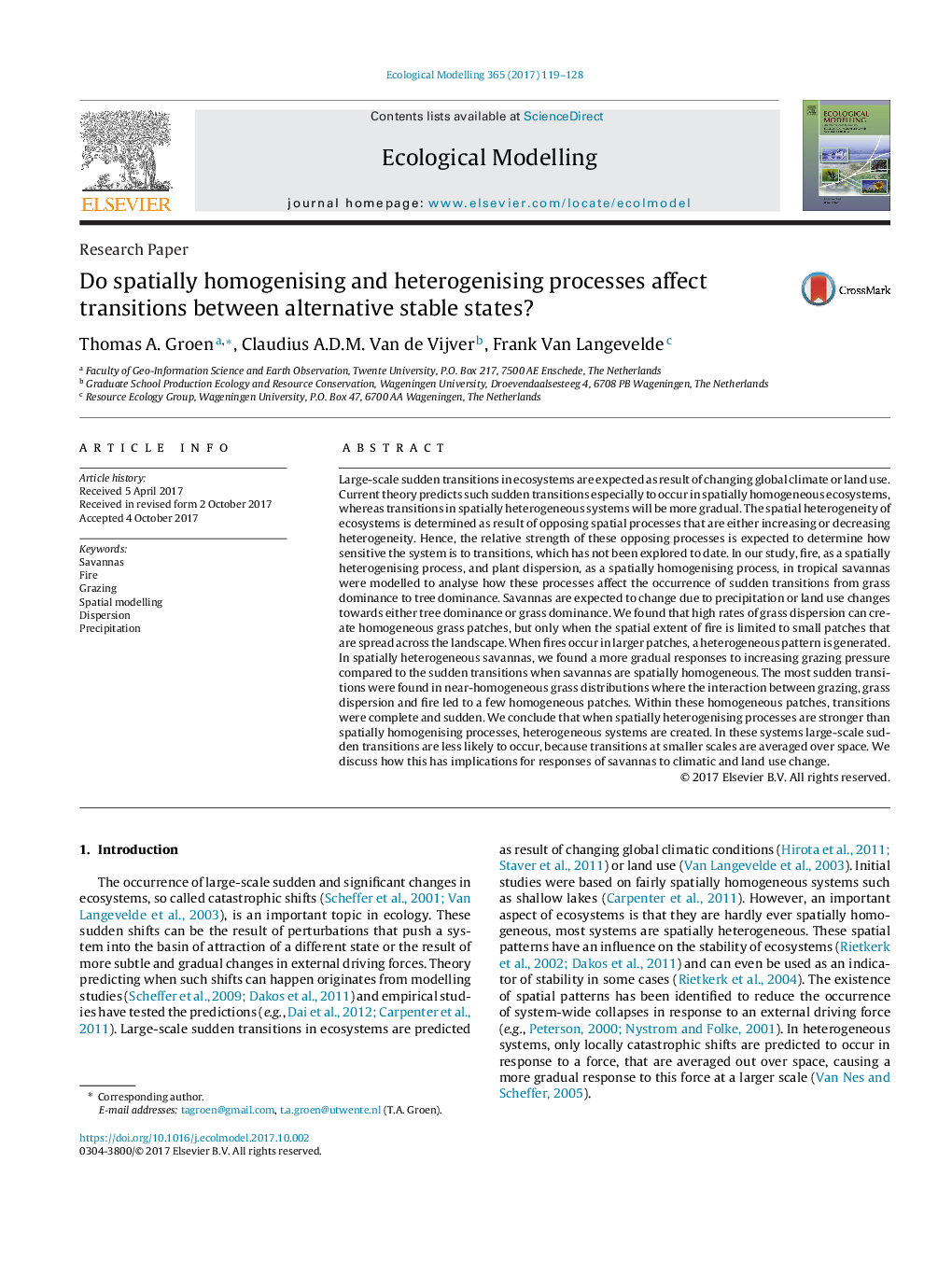| کد مقاله | کد نشریه | سال انتشار | مقاله انگلیسی | نسخه تمام متن |
|---|---|---|---|---|
| 5741971 | 1617382 | 2017 | 10 صفحه PDF | دانلود رایگان |
- Spatial processes affect the occurrence of large-scale transitions.
- Heterogenising and homogenising processes have opposite effects.
- The presence of spatial processes declines the tendency of large-scale transitions.
Large-scale sudden transitions in ecosystems are expected as result of changing global climate or land use. Current theory predicts such sudden transitions especially to occur in spatially homogeneous ecosystems, whereas transitions in spatially heterogeneous systems will be more gradual. The spatial heterogeneity of ecosystems is determined as result of opposing spatial processes that are either increasing or decreasing heterogeneity. Hence, the relative strength of these opposing processes is expected to determine how sensitive the system is to transitions, which has not been explored to date. In our study, fire, as a spatially heterogenising process, and plant dispersion, as a spatially homogenising process, in tropical savannas were modelled to analyse how these processes affect the occurrence of sudden transitions from grass dominance to tree dominance. Savannas are expected to change due to precipitation or land use changes towards either tree dominance or grass dominance. We found that high rates of grass dispersion can create homogeneous grass patches, but only when the spatial extent of fire is limited to small patches that are spread across the landscape. When fires occur in larger patches, a heterogeneous pattern is generated. In spatially heterogeneous savannas, we found a more gradual responses to increasing grazing pressure compared to the sudden transitions when savannas are spatially homogeneous. The most sudden transitions were found in near-homogeneous grass distributions where the interaction between grazing, grass dispersion and fire led to a few homogeneous patches. Within these homogeneous patches, transitions were complete and sudden. We conclude that when spatially heterogenising processes are stronger than spatially homogenising processes, heterogeneous systems are created. In these systems large-scale sudden transitions are less likely to occur, because transitions at smaller scales are averaged over space. We discuss how this has implications for responses of savannas to climatic and land use change.
Journal: Ecological Modelling - Volume 365, 10 December 2017, Pages 119-128
